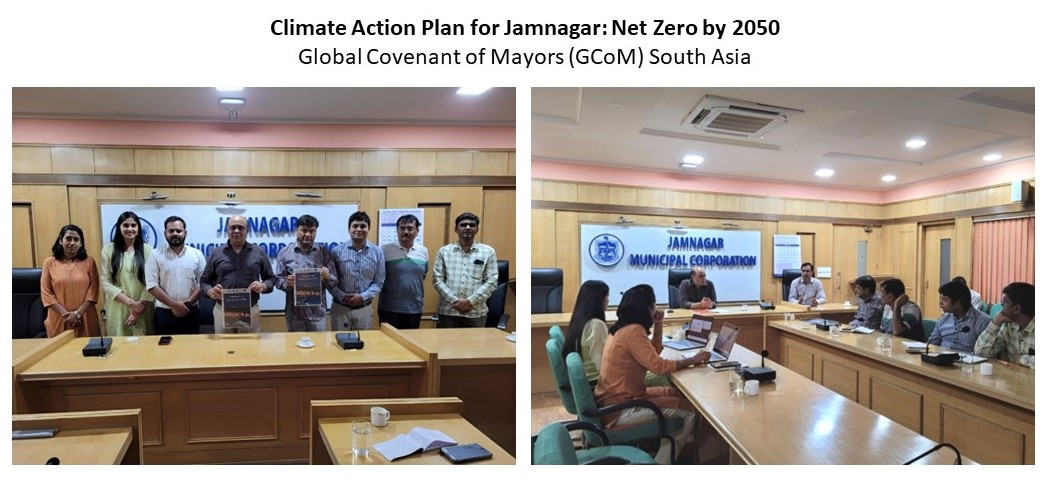Climate Action Plan for Jamnagar: Net Zero by 2050

The Jamnagar City Climate Action Plan, aiming for a Net-Zero carbon footprint by 2050 has been developed by the National Institute of Urban Affairs (NIUA) with the Global Covenant of Mayors for Climate & Energy (GCoM) and funded by the European Union. The plan was presented on July 16, 2024, to Mr. D N Modi, IAS, Municipal Commissioner, Jamnagar.
Known as the ‘Jewel of Kathiawar,’ Jamnagar is a coastal city in Gujarat's Saurashtra region. Jamnagar has become a hub for traditional textile crafts like-dye and Bandhani techniques. It's also a major industrial center, housing the world's largest oil refinery complex, petrochemical industries, and a strong presence of brassware production.
Jamnagar’s baseline emission inventory for 2021-22 shows total emissions of 861,532 MTCO2e, with a per capita rate of 1.1 MTCO2e. Stationary energy accounts for over 67% of these emissions, transportation for nearly 27%, and waste for only 6%. Projections indicate 4.1 times increase in emissions by 2050, with stationary energy’s contribution rising to 76%, and transportation and waste sectors decreasing to 20% and 4%, respectively. Composite flood risk mapping identifies 9% high-risk, 18% moderate risk, and 73% low-risk areas in the city.
The plan outlines a roadmap for Jamnagar to achieve 'Net Zero' and 'Climate Resilient' status by 2050, focusing on mitigation and adaptation.
Key Actions:
- Achieving carbon neutrality in government and municipal buildings
- Reducing industrial emissions and effluents
- Adopting zero-tailpipe emissions (ZTE) vehicles
- Managing groundwater resources and combating saltwater intrusion
- Developing low-carbon and climate-resilient neighbourhoods
